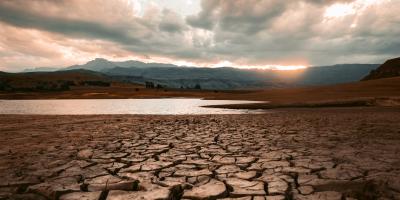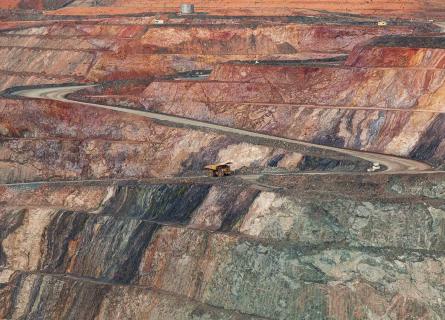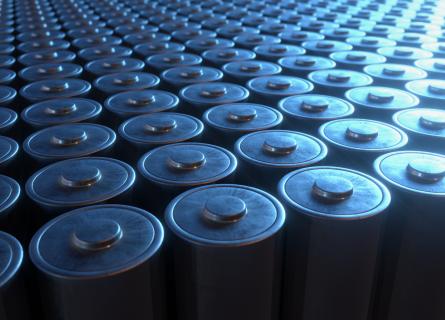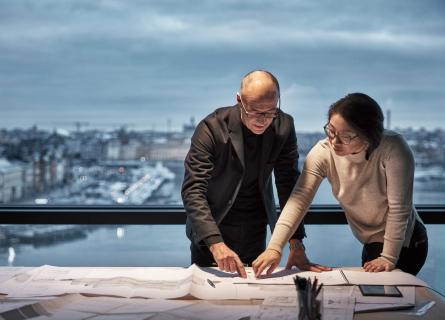
What do passport, mineral resources, green transition, circular economy and batteries have in common?
Written by Nani Pajunen and Iita Kejonen
Mineral resources are vital in the green transition
The competition for rare earth metals and other critical minerals is on. Some of them are crucial to the green transition and achieving carbon neutrality goals. These elements are essential for manufacturing wind turbines, solar panels, electric cars and batteries. In addition, the same raw materials are needed in smart solutions and ICT devices. (Figure 1)
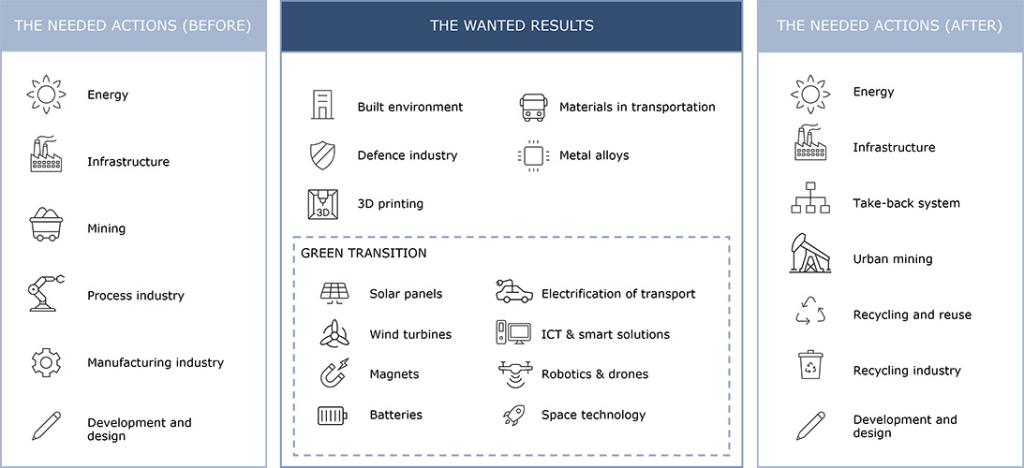
Currently, China controls the largest share of these valuable metals in the world. The European Union, and other parts of the world, are trying to be less dependent on that production, with China currently producing 98% of Europe’s supplies of rare earths. For private companies, security of supply and resilience of supply chains are vital for business. In addition, there’s a growing recognition that minerals and other raw materials are now a matter of national security. In order to reduce the European Union area's dependence, the EU will need to extract metals from its own ground.
As competition increases, countries may also introduce export bans. For example, at the end of last year, Zimbabwe banned the export of unprocessed raw lithium as part of efforts to have the key raw material in electric-vehicle batteries processed locally. Zimbabwe followed Indonesia, which announced a ban on the export of raw ores in 2019. However, both bans have been criticised by The World Trade Organization with concerns around the legality of such sweeping bans. In any case, it seems the atmosphere is tightening regarding these natural resources.
Mining companies around the world are working to find new, exploitable deposits. In January, the Swedish mining company LKAB announced that it had found a significant deposit of rare earth metals. Also in Finland, in Sokli, a globally significant deposit of rare earth metals has been identified. There are several hundreds of geologically similar deposits in the world, but they are much smaller. However, there is still a long distance between deposit and industrial level mining. The opening of a mine can easily take up 15-20 years.
The growing mining industry also raises societal questions. Such mines need a social acceptance, in other words a license to operate. In order to exploit rare earth metals, local authorities and citizens need to be convinced that the opening of mines will be sustainable as well as beneficial on a local level.

Valuable minerals in circular economy
Even though we are still living in the linear economic model, a “take–make–waste” system, the circular economy model is moving closer. The core of carbon-neutral circular economy is to keep materials and products in use as long as possible and then recycle their components back into use when they are at end of life. The European Union promotes a sustainable and fair economy with policies and strategies, such as the European Green Deal, the Circular Economy Action Plan and in addition, The European industrial strategy. Through ambitious environmental policy, the aim is to ensure that European industry can lead by example in pursuing a worldwide carbon-neutral circular economy.
From the battery and mineral resources perspective, this means there is an acute need to integrate circular economy thinking in all the phases of product´s lifecycle. In the future, we must already ensure that the product is long-lasting and recyclable in the product´s design phase, that components and materials used in it can be recycled at end of life, and that information about the product's materials remains available throughout the product's life cycle.
So, how to apply circular economy principles in the battery sector? Before starting anything new, we must rethink everything and consider whether it's possible to carry out current processes in different and more sustainable ways. We must challenge ourselves to consider if there really is a need for new material or product, or if repairing, remanufacturing or rebuilding something that already exists is an option.
Design and develop for circular economy
The design phase outlines a product´s life. Therefore, for circular economy, it is the most important phase. We must make it our goal to design an “everlasting” product, using parts and components that are easier to repair and maintain and offering new maintainence and repair services that extend the life of the product as a new business. It is also important to minimise environmental impacts in the use phase, cultivating a culture of taking care of products, maintaining them, and using energy efficiently.
In the planning and design phases, consider where changes can be made – can you choose more sustainable materials which are easier to recycle in the end of life? To what extent can you use recycled materials, products and components in the new solution? In addition, develop new materials using as many recycled materials as possible.
Consider the end of life phase at the beginning and make a good plan for the recycling phase. Use as many components, elements and parts as a product as possible, and recycle the rest of the materials.
Collect important data during the product´s life cycle. (Figure 1 and 2) Use the data model as a data bank of materials and products. Use digitalisation and smart solutions there where it gives added value, keeping in mind that digitalisation has an environmental footprint as well.
Material and resources management via material passports
When in some cases it is not possible to design a product that lasts “indefinitely”, it is increasingly important to obtain the highest possible recycling rates. For the product to be disassembled and separated into recyclable parts, it is necessary to know exactly which components it contains, how they can be recycled, and also where they could be reused in the future. To make this easier, an electronic data bank could be established.
This kind of model for “material passports” has already been developed for the building industry (BAMB Buildings as Material Banks). In this model, buildings are considered as material banks during their lifetime. The background for this in the building industry is in the growing demand for circular economy solutions. Manufacturers and their customers were, and still are, looking for reliable information about products designs, pathways and composition, to be able to put the recovery potential into practice. To fulfil this need, the Materials Passport tool as well as an accompanying software were developed in the BAMB project. The model was based on the “Nutrient Certificates” concept described in “Resource Re-Pletion” publication by Hansen, Braungart and Mulhall in 2013. https://www.researchgate.net/publication/302513950_Resource_Repletion_Role_of_Buildings

In the building industry, a single Materials Passport would refer to a material, product or system, defining the recovery value, describing general characteristics that make them valuable. In order to keep or increase the value of materials and components in the building sector, the passports could also create incentives for suppliers to create more and more sustainable solutions and building products and facilitate reverse logistics and take back of materials.
In mining and metals industry, including the battery sector, an electronic material passport of a battery could contain all the same information about the products, as in building industry’s example:

Imagine a system where an electric car battery is manufactured. During the manufacturing process, all information on the sources (phase 1 in Fig 2.) of the metals and minerals are recorded in an electronic data bank. Furthermore, information about all used materials, components and their quantities are automatically recorded in the same place (phase 2), together with disassembly instructions of the battery. After this, all recorded data can be found easily by electronically scanning the battery in question. During its lifetime in use, all essential details could be recorded: way of using the battery, maintenance and repair information and updates of the estimated remaining lifetime (phase 3), before the transportation to its pre-selected recycling facility. Towards to end of life phase of the battery, all the previous information could easily be found and supplemented with take back system, recycling and reuse plans (phase 4). Moreover, it could be considered if the materials passports could be integrated to a system, where potential future customers of the recycled product components could already be identified and reserved.
Next steps regarding critical minerals in the European Union
The demand for critical raw materials is predicted to increase in the near future. At the same time, Europe relies on imports, often from third country suppliers. Therefore, there is a need to mitigate the risks for supply chains related to such strategic dependencies, to ensure the European Union´s economy and green transition.
The Critical Raw Materials Act will ensure the European Union´s secure and sustainable supply of critical raw materials. The Act will improve the refining, processing and recycling of critical raw materials in Europe. Raw materials are vital for manufacturing key technologies for the twin transition – digitalisation and circular economy – such as batteries. The target is to strengthen the cooperation with reliable trading partners globally to reduce the EUs current dependency on a few specific countries. For European businesses, it is of common interest to secure sustainable production, ensuring the reliability of supply chains at the same time.




